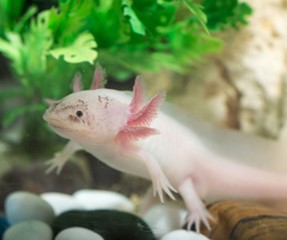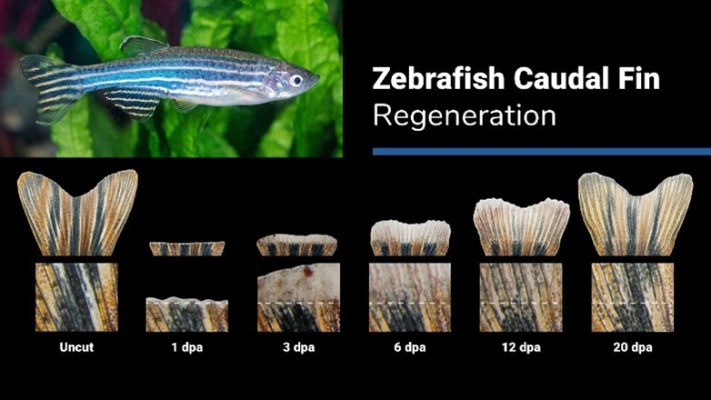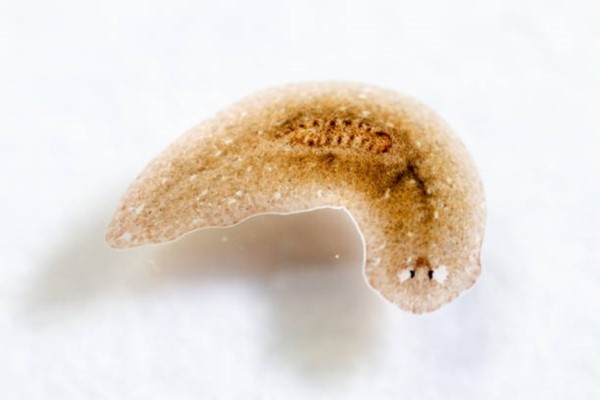Regeneration
On this page:
- What Is Regeneration?
- What Scientists Know About How Regeneration Occurs
- Studying Regeneration for Human Health
- NIGMS-Funded Research Advancing Our Understanding of Regeneration
- Research Organisms Used to Study Regeneration
What Is Regeneration?
Regeneration is the process of replacing or restoring damaged or missing cells, tissues, organs, and even entire body parts to full function. All living organisms, including plants and animals, have some ability to regenerate as part of their natural maintenance of tissues and organs.
Some animals have extensive regenerative abilities. For example, the tiny freshwater animal hydra can form two whole bodies after being cut in half. The axolotl, or Mexican salamander, can regenerate the form and function of almost any limb, organ, or other body part.
More complex animals, including humans, have limited regenerative abilities. They include:
- Forming thick scars to promote the healing of wounds and burns
- Building new tissue to knit bone pieces together after a fracture
- Regrowing hair and skin
Scientists are studying regeneration for its potential uses in medicine, such as treating a variety of injuries and diseases. This rapidly advancing field is called regenerative medicine.

What Scientists Know About How Regeneration Occurs
Some organisms regenerate by first forming a mass of many types of dividing cells, including adult stem cells, at an injury. In plants, this mass is a structure called a callus, which grows into new leaves, flowers, stems, or roots. In some animals, such as salamanders, the structure is called a blastema. After an amputation, blastema cells rapidly divide to form the skin, scales, muscle, bone, or cartilage needed for growing a new limb, fin, or tail.
Most mammals, including humans, don’t form blastemas. Their limited regenerative abilities are the result of adult stem cells that differentiate into the cell types of the tissue or organ in which they are found, which enables the formation of the parts needing replacement due to injury or aging.
While humans can’t regenerate limbs, they can undergo compensatory hypertrophy, which is an increase in an organ’s size in response to damaged or removed tissue. When part of the liver is damaged or removed, for example, the remaining portion grows to the original size and allows the liver to function as it did before. Other organs, including the pancreas, thyroid gland, kidneys, adrenal glands, and lungs, compensate for damage in a similar but more limited way.
Studying Regeneration for Human Health
Human organs and tissues have varied capacities for tissue repair that gradually deteriorate with age. The brain, spinal cord, heart, and joints are among those with the least regenerative capacity. These limitations are partly the cause of conditions such as heart failure and degenerative nerve diseases. A better understanding of the regeneration process could help with treating age-related conditions as well as giving clues about repairing damaged organs or even, someday, replacing lost limbs.
What Are Stem Cells?
Stem cells are cells that can develop into the different, specialized cell types found in the body. During embryonic development, each of the stem cells in the embryo can differentiate into any of the cell types in the adult body, a characteristic known as pluripotency. Adult stem cells, like those involved in regeneration, can differentiate into the cell types of the tissue or organ in which they are found. This type of stem cell is important for the normal repair and maintenance of tissues.
Researchers have developed methods to reprogram mature adult human cells, like skin cells, to act more like embryonic stem cells. Scientists use these cells, called induced pluripotent stem cells, to study the basics of human aging, cell division, and growth, and to develop therapeutics.
NIGMS-Funded Research Advancing Our Understanding of Regeneration
NIGMS-funded scientists focus on understanding the basics of regeneration to help develop regenerative medicine strategies for regrowing lost tissues in humans. They seek answers to important questions such as:
- How does the body regulate the steps of tissue regeneration? Researchers are working to identify specific cell pathways involved in the many steps of tissue regeneration, including detecting tissue loss and developing a blastema. Understanding the systems that suppress regeneration, and how to turn them off, may also play an important role in developing ways to activate regeneration in people.
- Why do regenerative abilities decline with age? Tissue and organ regeneration aren’t highly active in most human tissues and become even less active with age. Understanding the reasons for this loss could lay the foundation for developing therapies that may stimulate regeneration at all ages.
- What role do nerve cells play in regeneration? In many species and tissues, regeneration is dependent on nerve cells. Researchers are working to understand which nerve cell types and cell functions, such as protein production or electrical impulses, are needed for regeneration.

Research Organisms Used to Study Regeneration
Most research organisms used to study regeneration can regrow body parts that humans can’t. The planarian can regenerate its entire body from one small piece of tissue, and the zebrafish can repair significant damage to its heart, fins, pancreas, eyes, brain, and spinal cord. Some research organisms, like segmented worms, have transparent bodies that allow researchers to study regeneration visually by following how cells move in living organisms.
Research organisms are useful for studying the possibilities of regeneration because humans have similar genes to these animals that have more complete regenerative abilities. However, scientists don’t yet fully understand how to turn on such processes in humans.

Content reviewed September 2023
NIGMS is a part of the National Institutes of Health that supports basic research to increase our understanding of biological processes and lay the foundation for advances in disease diagnosis, treatment, and prevention. For more information on the Institute’s research and training programs, visit https://www.nigms.nih.gov.
